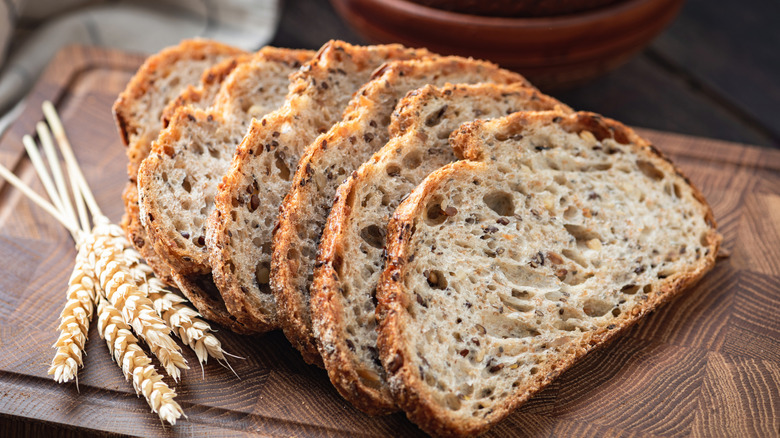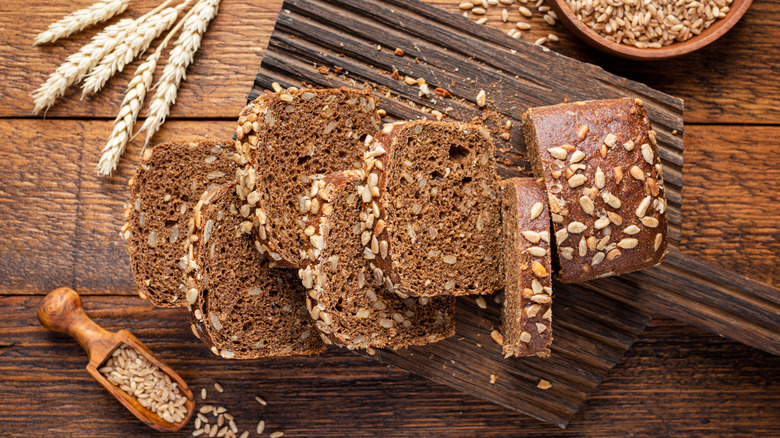Whole Grain Bread Vs Whole Wheat: Is There Really A Nutritional Difference?
There are plenty of different varieties of bread available, and there are also many nutritional differences between them, like those between sourdough and white bread. Some have dramatically different nutritional profiles despite seeming relatively similar from the outside. But two types of bread, whole grain and whole wheat, seem almost identical. Is there actually a difference between them when it comes to nutrition?
The truth is that there's next to no difference between the nutritional value of a slice of whole grain bread versus the same serving size of whole wheat. While both can vary depending on the brand and whether you're making bread at home versus buying it at the store, they're nearly identical when it comes to calorie count and vitamin and mineral content, as both contain all of the parts of the original wheat grain. Both are generally quite a bit healthier for you than breads made with refined flour like white bread, which contains only parts of the grain and therefore less of its nutrients.
Of course, this is when we're talking about 100% whole grain or wheat breads. Some types of bread can claim to be whole wheat or grain but are actually partially made with refined white flour. If it's not 100% or uses potentially deceptive buzzwords like "enriched," then it may not be entirely genuine whole grain or whole wheat bread.
The actual differences between whole grain and whole wheat bread
So, if there isn't a nutritional difference between whole grain and whole wheat, then what is the real difference? First, we need to understand what sets them apart from other breads. Whole wheat and grain bread are made with flour that contains all three parts of the grain kernel: the bran, the germ, and the endosperm. Refined white flour, which is used to make breads like white bread and the brioche for our brunch-worthy caramel pecan French toast, has had the bran and germ processed out, leaving only the endosperm.
The bran and germ contain many nutrients and a great quantity of fiber that the endosperm lacks, which is what gives whole wheat and whole grain breads their health benefits. The difference between whole wheat and whole grain is that whole wheat exclusively uses wheat grain and whole grain may have wheat along with other grains like barley or sorghum. They might use the same type of flour in the same way, but whole grain also may contain things whole wheat doesn't, though not in quantities large enough to significantly change its nutritional stats.
In simpler terms, both whole wheat and whole grain are "whole grain," but a whole grain bread may not be entirely whole wheat. The grains in whole grain bread do, however, still have all three parts of their kernel, so you can rest assured that they have comparable health benefits.

